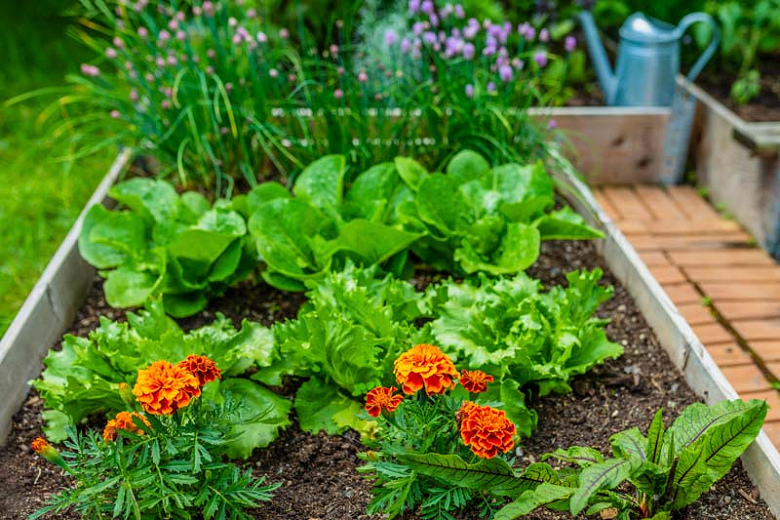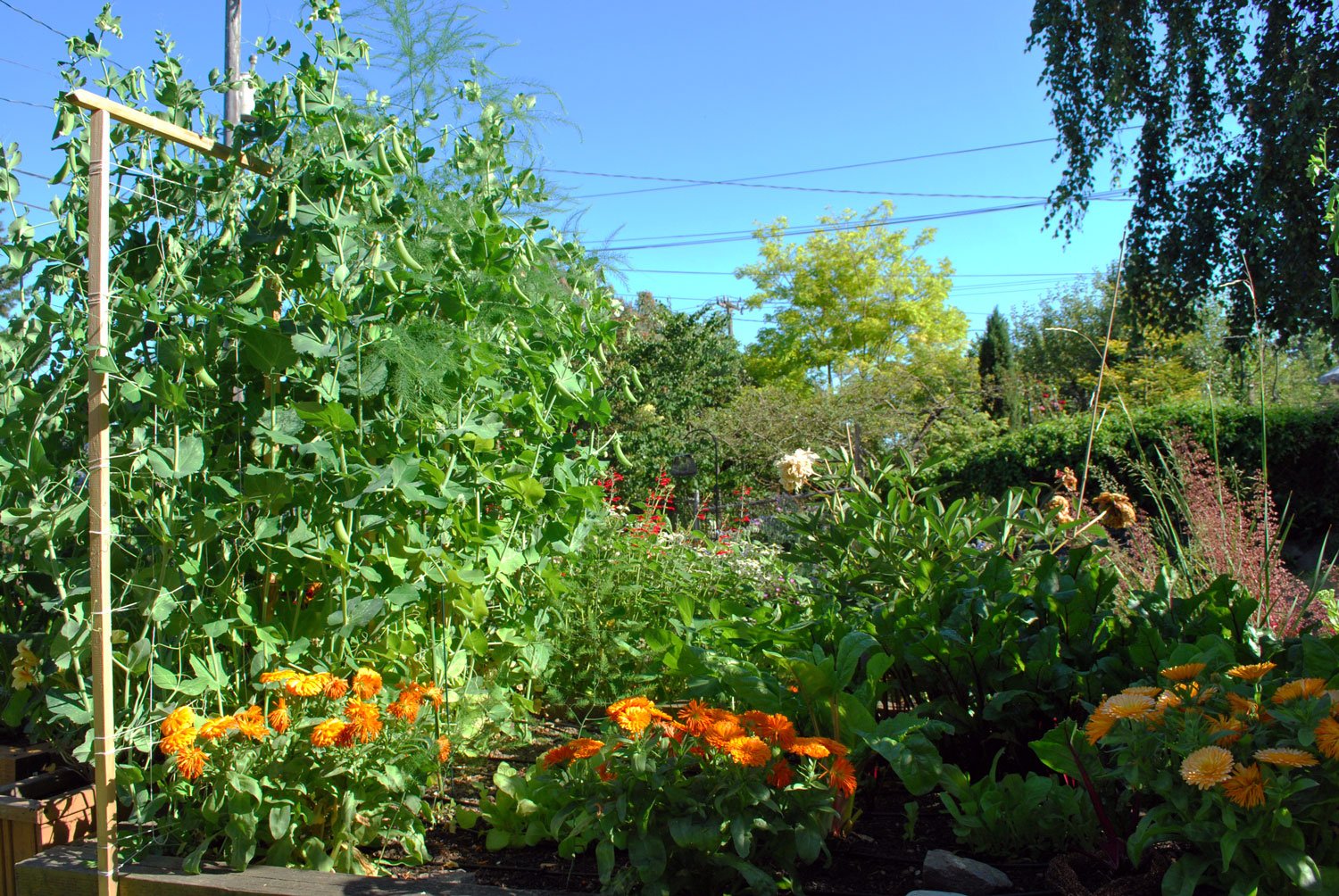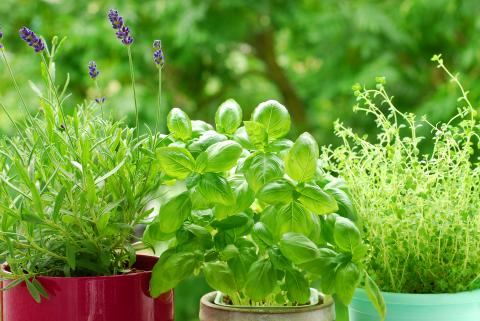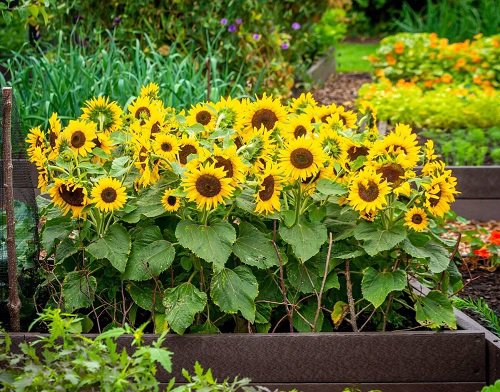Companion Planting In Pots: The Ultimate Guide To Growing More Food In Less Space
Companion Planting in Pots: The Ultimate Guide to Growing More Food in Less Space
If you're short on space but want to grow your own food, companion planting in pots is a great option. By planting certain types of plants together, you can help them thrive and even protect them from pests.
In this guide, we'll discuss the basics of companion planting in pots, as well as some specific plant combinations that work well together. We'll also provide tips on how to choose the right pots and soil for your garden, and how to care for your plants once they're in the ground.
What is Companion Planting?
Companion planting is the practice of planting certain types of plants together for their mutual benefit. Some plants attract beneficial insects, while others repel pests. Some plants help to improve the soil, while others provide shade or windbreaks.
When you plant companion plants together, you can create a more balanced and harmonious ecosystem in your garden. This can lead to healthier plants, better yields, and fewer problems with pests and diseases.
How to Choose Companion Plants
There are many different ways to choose companion plants. You can consult books or websites that list specific plant combinations, or you can experiment on your own.
Here are a few things to keep in mind when choosing companion plants:
- Consider the plants' needs. Some plants need full sun, while others prefer partial shade. Some plants need well-drained soil, while others are more tolerant of wet conditions.
- Think about the plants' growth habits. Some plants are tall and need plenty of space, while others are more compact.
- Consider the plants' purpose. Are you planting for food, flowers, or both?
Once you've chosen your plants, it's a good idea to sketch out a plan for your garden. This will help you to visualize how the plants will fit together and make sure that you have enough space for everything.
Planting Companion Plants in Pots
When planting companion plants in pots, it's important to choose the right size pots. The pots should be large enough for the plants to grow comfortably, but not so large that they're difficult to move.
You'll also need to choose the right type of soil for your plants. Some plants prefer loamy soil, while others prefer sandy soil. You can buy pre-made potting soil or mix your own.
When planting your companion plants, it's important to space them out properly. This will give them enough room to grow and prevent them from competing for resources.
Caring for Companion Plants in Pots
Once your companion plants are in the ground, it's important to care for them properly. This includes watering them regularly, fertilizing them as needed, and protecting them from pests and diseases.
Watering your plants is especially important during hot, dry weather. You should also fertilize your plants every few weeks with a balanced fertilizer.
To protect your plants from pests and diseases, you can use organic pest control methods such as insecticidal soap or neem oil. You can also plant some companion plants that help to repel pests, such as marigolds or nasturtiums.
Conclusion
Companion planting in pots is a great way to grow more food in less space. By planting certain types of plants together, you can help them thrive and even protect them from pests.
If you're new to companion planting, start by choosing a few easy-to-grow plants that are known to be compatible. Once you've had some success, you can start to experiment with more complex combinations.
With a little planning and care, you can create a productive and beautiful companion planting garden in your own backyard.
Combining plants that thrive together can help you create a beautiful and productive container garden. By planting companion plants, you can attract beneficial insects, deter pests, and improve the overall health of your plants.
If you're new to companion planting, Gardenia Inspiration is a great resource. This website provides a comprehensive guide to companion planting, including information on the best plants to grow together, how to plant them, and how to care for them.
The website also includes a helpful companion planting chart that you can use to plan your garden. The chart shows which plants benefit each other and which plants should be avoided.
So if you're looking to create a successful container garden, Gardenia Inspiration is the perfect place to start.
FAQ of companion planting in pots
Q: What are the benefits of companion planting in pots?
A: Companion planting is the practice of planting certain types of plants together in order to benefit each other. There are many benefits to companion planting in pots, including:
- Increased yields: Companion plants can help to attract beneficial insects, which can help to pollinate your plants and control pests.
- Improved soil health: Companion plants can help to improve the soil's structure and fertility, which can lead to healthier plants.
- Reduced pest and disease problems: Companion plants can help to repel pests and diseases, which can save you time and money on pest control.
- Increased diversity: Companion planting can help to increase the diversity of your garden, which can make it more attractive to wildlife.
Q: What are some good companion plants for pots?
A: There are many different companion plants that can be grown in pots. Some of the most popular include:
- Basil and tomatoes: Basil helps to repel pests that can damage tomatoes, such as aphids and tomato hornworms.
- Marigolds and cucumbers: Marigolds help to repel pests that can damage cucumbers, such as cucumber beetles and squash bugs.
- Mint and carrots: Mint helps to repel pests that can damage carrots, such as carrot flies.
- Borage and strawberries: Borage attracts pollinators that can help to pollinate strawberries.
- Nasturtium and brassicas: Nasturtiums attract pests that would otherwise damage brassicas, such as cabbage moths.
Q: How do I choose companion plants for my pots?
A: When choosing companion plants for your pots, there are a few things to keep in mind:
- The plants' mature size: Make sure that the plants you choose will not outgrow their pots.
- The plants' light requirements: Make sure that the plants you choose have similar light requirements.
- The plants' water requirements: Make sure that the plants you choose have similar water requirements.
- The plants' pest and disease resistance: Choose plants that are resistant to the same pests and diseases.
Q: How do I plant companion plants in pots?
A: To plant companion plants in pots, follow these steps:
- Choose the right pots for your plants. The pots should be large enough to accommodate the plants' mature size.
- Fill the pots with potting soil.
- Plant the seeds or seedlings according to the instructions on the plant tag.
- Water the plants well.
- Fertilize the plants regularly.
Q: How do I care for companion plants in pots?
A: To care for companion plants in pots, follow these tips:
- Water the plants regularly, especially during hot weather.
- Fertilize the plants regularly with a balanced fertilizer.
- Protect the plants from pests and diseases.
- Deadhead spent flowers to encourage new growth.
Image of companion planting in pots
- Image 1: A photo of a pot with tomatoes, basil, and chives. The caption reads "Tomatoes, basil, and chives are classic companion plants that help each other thrive. The basil attracts pollinators, the chives repel pests, and the tomatoes benefit from the shade of the basil."
- Image 2: A photo of a pot with carrots, marigolds, and lettuce. The caption reads "Carrots, marigolds, and lettuce are a great combination for a container garden. The marigolds deter pests, the lettuce provides shade for the carrots, and all three plants are relatively low-maintenance."

- Image 3: A photo of a pot with potatoes, beans, and peas. The caption reads "Potatoes, beans, and peas are a nitrogen-fixing trio that can help each other grow. The beans and peas fix nitrogen in the soil, which the potatoes can use. All three plants are also relatively easy to grow in containers."

- Image 4: A photo of a pot with herbs, such as rosemary, thyme, oregano, and sage. The caption reads "Herbs are a great way to add flavor to your cooking, and they can also be grown in containers. Companion planting herbs can help to deter pests and improve the flavor of each other's leaves."

- Image 5: A photo of a pot with flowers, such as marigolds, nasturtiums, and sunflowers. The caption reads "Flowers can add beauty and color to your container garden, and they can also be beneficial to other plants. Marigolds deter pests, nasturtiums attract pollinators, and sunflowers provide shade for smaller plants."

Post a Comment for "Companion Planting In Pots: The Ultimate Guide To Growing More Food In Less Space"